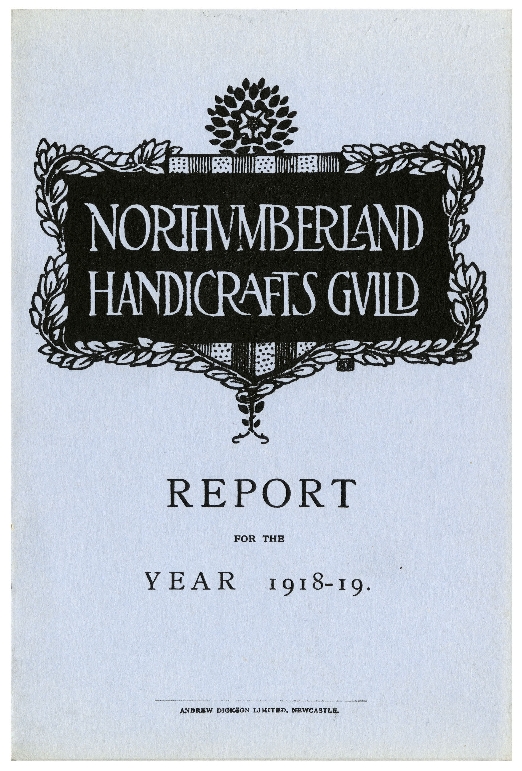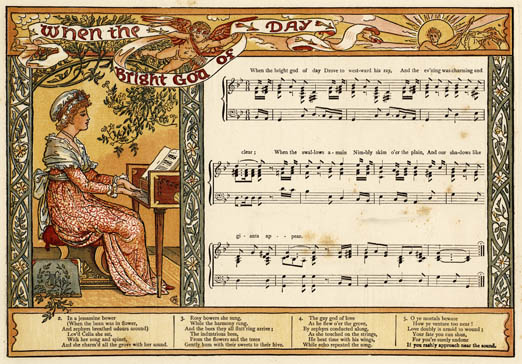
(Northumberland Handicrafts Guild Archive, NHG 3/11)
The Northumberland Handicrafts Guild was formed in June 1900 with the aim of promoting the study and practice of handicrafts, such as embroidery, wood work, basket work, leather work and weaving, in the County of Northumberland.
The Guild’s formation had its origins in the Arts and Crafts Movement which began in England in the 1880s in response to the growth of industrialisation and mass production by machines. The Movement called for a revival of real craftsmanship and traditional craft techniques, and embraced nostalgia for the mediaeval age which was seen as the golden age of creativity and freedom. Leading figures in the Movement believed in a social and utopian society where artists and craftsmen were viewed as equals. One of the founding fathers of the Movement was William Morris who famously advised, “Have nothing in your house that you do not know to be useful, or believe to be beautiful”.
A key feature of the Movement was the establishment throughout the country of societies and guilds to bring together artists and craftsmen, and to help publicise the movement through meetings, classes, lectures, exhibitions and craft demonstrations. The use of the word “guild” harked back to the mediaeval trade guilds which protected and promoted the common interests of craftsmen. The Northumberland Handicrafts Guild was one such example, and other examples included the Guild and School of Handicraft in the East End of London, the Century Guild and John Ruskin’s Guild of St George.
The decorative motif carried on the front cover of the Northumberland Handicrafts Guild’s Annual Reports, as depicted here, typified the artistic and graphic styles which were associated with the Arts and Crafts Movement, while the Guild’s motto proclaimed, “by hammer and hand all arts do stand”.
The Guild arranged teaching classes and lectures in most areas of the county, new classes in its first year including needlework and embroidery, led by Lady Anne Bowes-Lyon at Haydon Bridge and by Mrs H. Pease at Cramlington. Lectures in the first year included the Reverend S. Gates on “Lace Working and Embroidery” at Haydon Bridge, Messrs Hatton and Williams on “Handicrafts in relation to home life” at Allendale and Mr G. Blount on “Democratic Art” in Newcastle.
There were strong links between the Guild and the Art Department of the Durham College of Science at Newcastle upon Tyne, known from 1904 as Armstrong College (and ultimately to evolve into the present day Newcastle University). The Guild’s first Vice President was Charles W. Mitchell, Chairman of the College’s Art Committee and a member of the College Council, while its first Honorary Secretary was the historian Thomas Edward Hodgkin, also a member of the College Council. Other Armstrong College figures such as Richard George Hatton, for many years Professor in Fine Art, Ella Pease and Miss Noble held office or served on the Guild’s committee. Craft work produced during the Guild’s classes was exhibited annually in the College and entries were judged by a team of experts, with awards given for individual work.
The Guild was also the first organisation of its kind to teach handicrafts to wounded soldiers during the First World War. Classes were held in Armstrong College, part of which was being used as a ward of the First Northern Military Hospital, and doctors testified to the psychological benefits which patients derived from the work.

